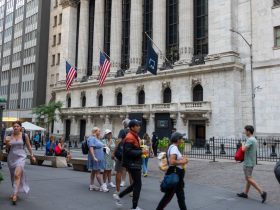forming in the $25 trillion Treas
The sharp selloff in the $25 trillion Treasury market that gathered steam since last week has been spooking investors, but it also may be an good investing opportunity, said Andrew Szczurowski, a portfolio manager at Morgan Stanley Investment Management, and a part of its government bond strategy team.
“I think that because we are later in the cycle, it’s a good time to buy,” Szczurowski told MarketWatch. “But we have been in a bit of a vacuum that is scaring people.”
The 10-year Treasury yield
BX: TMUBMUSD10Y
was above 4.6% on Wednesday, potentially moving closer to reclaiming the 5% mark, a level last seen in 2007. But the move higher from roughly 3.4% in May for the U.S. economy’s benchmark rate has been particularly troubling.
Szczurowski attributed part of the massive selloff to the Federal Reserve signaling last week that rates may stay higher for longer than previously anticipated, which eventually would pinch corporate profitability and potentially spur more defaults.
“People are starting to come around to — which is not my view — of a higher for longer stance on rates,” Szczurowski said.
“It also has kind of been a one-way street higher in the longer end of the Treasury market,” he said, since the Bank of Japan’s decision in July to loosen up its policy of yield-curve control could be spurring Japanese investors, the top group of foreign holders of U.S. debt, to sell. Bond yields and price move in the opposite direction.
The current backdrop also differs from a year ago in that a “buyers’ strike” from institutional investors appears to be forming, he said, whereas investors last September were “buying the dip” as stress in the U.K. pension system rattled financial markets.
Read: Who’s buying Treasurys? Households and hedge funds
Still, Szczurowski said a soft landing for the economy would be tough for the U.S. to achieve, if rates stay high, the labor market stays strong and inflation ends up resistant to falling all the way back to the Fed’s 2% annual target.
“It’s like doing a plank for 10 seconds,” he said of the economy navigating the Fed’s current 5.25% -5.5% policy rate range. “You can do it, but if you try to do a plank for 10 minutes there’s a lot more stress on your body. It will have an impact.”
To that end, he also expects the Fed to cut rates quicker than its updated “dot plot,” a chart of the potential path of rates, suggests.
His other advice for investors? It could take week or two, but he thinks current yields on 10-year and 30-year Treasury notes could spur more money-managers, pension funds and insurance companies back to the market.
Stocks closed mostly higher Wednesday, with the Dow
DJIA
off about 0.2%, the S&P 500 index
SPX
less than 0.1% higher and the Nasdaq Composite Index
COMP
up 0.2%, according to FactSet data.
Read the full article here











Leave a Reply